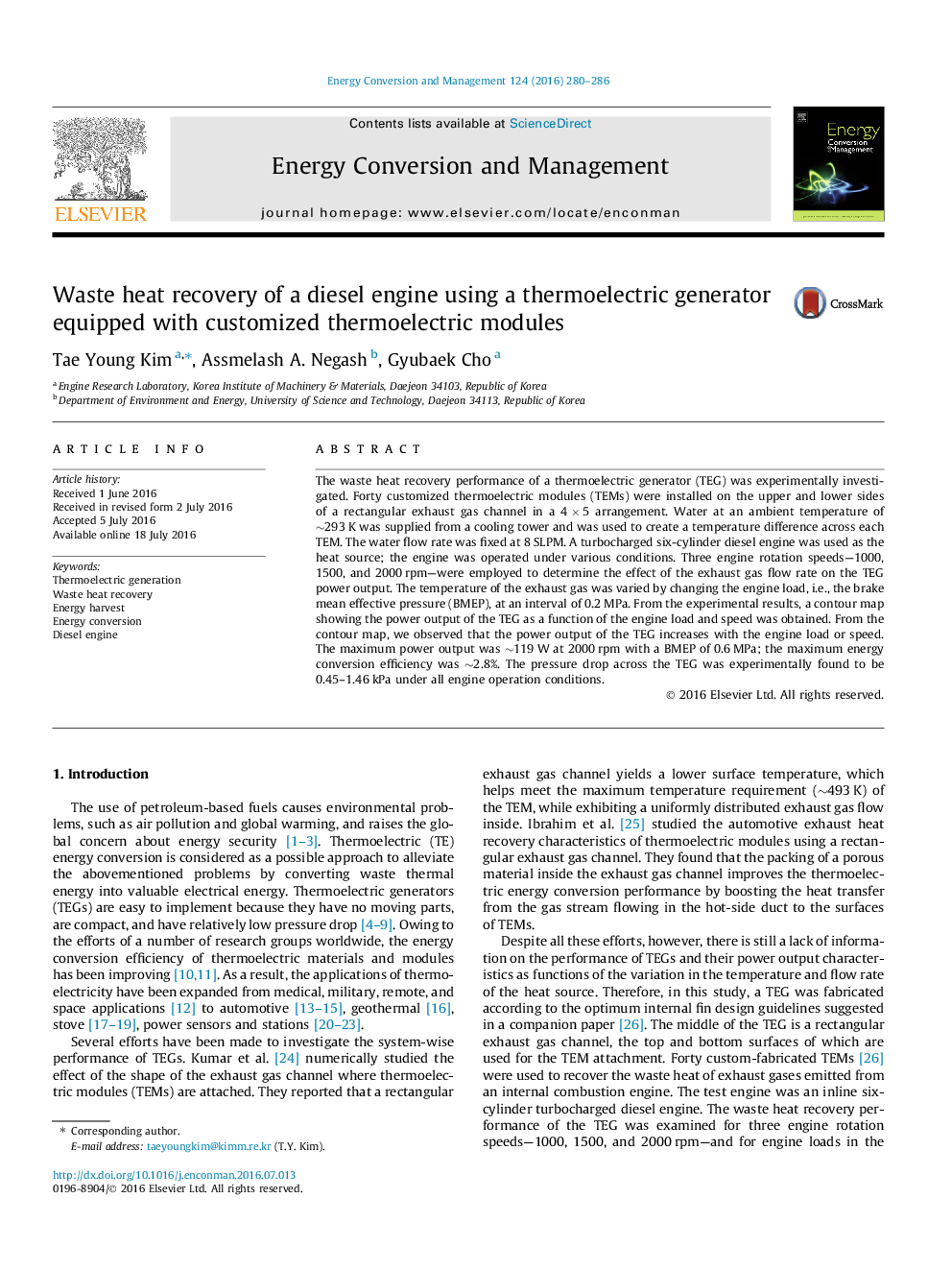| Article ID | Journal | Published Year | Pages | File Type |
|---|---|---|---|---|
| 764965 | Energy Conversion and Management | 2016 | 7 Pages |
•A thermoelectric generator (TEG) is produced using customized thermoelectric modules.•Performance of the TEG is studied under various heat source conditions.•A power output contour map is provided as a function of engine load and speed.•The TEG’s maximum power output and conversion efficiency are ∼119 W and ∼2.8%.•The pressure drop across the TEG is in the range of 0.45–1.46 kPa.
The waste heat recovery performance of a thermoelectric generator (TEG) was experimentally investigated. Forty customized thermoelectric modules (TEMs) were installed on the upper and lower sides of a rectangular exhaust gas channel in a 4 × 5 arrangement. Water at an ambient temperature of ∼293 K was supplied from a cooling tower and was used to create a temperature difference across each TEM. The water flow rate was fixed at 8 SLPM. A turbocharged six-cylinder diesel engine was used as the heat source; the engine was operated under various conditions. Three engine rotation speeds—1000, 1500, and 2000 rpm—were employed to determine the effect of the exhaust gas flow rate on the TEG power output. The temperature of the exhaust gas was varied by changing the engine load, i.e., the brake mean effective pressure (BMEP), at an interval of 0.2 MPa. From the experimental results, a contour map showing the power output of the TEG as a function of the engine load and speed was obtained. From the contour map, we observed that the power output of the TEG increases with the engine load or speed. The maximum power output was ∼119 W at 2000 rpm with a BMEP of 0.6 MPa; the maximum energy conversion efficiency was ∼2.8%. The pressure drop across the TEG was experimentally found to be 0.45–1.46 kPa under all engine operation conditions.
